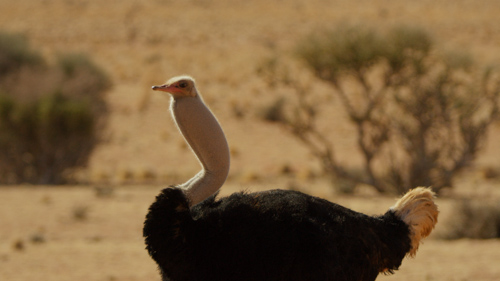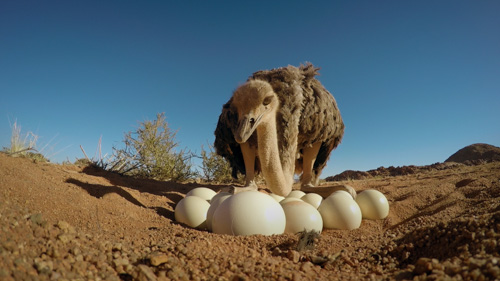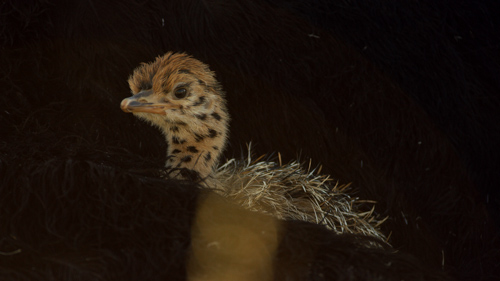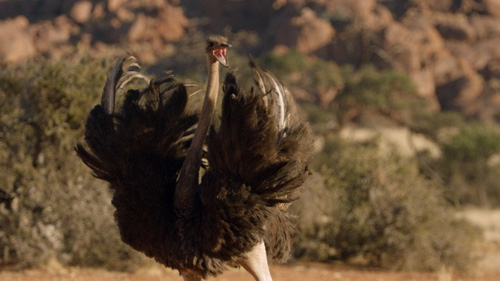Ostrich – A Life on the Run
For Terra Mater and National Geographic
The ostriches of Namibia face an annual challenge: choosing the exactly the right moment to breed. The birds must ensure their clutches hatch around the time of the rains. If the timing is wrong, food will be scarce and the chicks will die. If it’s right, then a new generation will get the chance of a life on the run.
Many of the remaining wild ostriches of Africa live in the Namib Desert, the oldest desert in the world. Here, hot, dry winds blown from South Africa bake the parched sands and the territorial call of the male ostrich can be heard resounding across the dunes. This nomadic bird has no permanent home. Instead it wanders with a harem of hens that it must constantly defend from neighbouring males. The birds are an incredible sight. Avian record breakers, the black and white males are the tallest and heaviest of all living birds.

On the eastern edge of the desert, at the height of the dry season, these giants show their strength. Flicking their wings in aggressive displays the males charge at each other, hoping to scare away any challengers to their mating rights. When it comes to mating, their wings and feathers are put to a different, but no less impressive use. Rocking from side to side, the male ostrich quivers his spread wings in the air, fanning one after the other over his body. It is a mating dance known as kantling and is one of the most extraordinary in the avian world.

The females too can lay claim to be record breakers themselves. Their eggs are the largest eggs laid by any living creature, weighing just under 2kg. But they are also the smallest, in relation to body size, of any in the bird kingdom. Each egg represents less than 1 percent of the female’s body weight. They will take six weeks to hatch. Together, the cock and hen share responsibility for the clutch and they are vigilant in their duties. Each day, from 9am to 5pm the mother incubates the eggs, sitting without shade, food or water for an entire eight hours. Each evening, regular as clock-work, the father returns and takes over for the night shift. Like a relieved office worker, the female clocks-off and heads out for a much-needed drink.

While the ostriches in the Namib are incubating their eggs, the ostriches in the Kalahari Desert in the north of the country have already hatched theirs. They placed their bets in the breeding stakes far earlier, and are now caring for their young, teaching them how to forage for themselves.
But both sets of dedicated parents can only do so much. The care, time and effort they expend on the survival of their chicks will amount to nothing should the rains not come. If the rains fall there will be copious succulent vegetation available. If they don’t, then their chicks will die.

From the north to the south of the country, ostriches made different decisions about when to breed. And each decision was a gamble - the stakes life or death. Will the ostriches of the Kalahari and the Namib have bought their chicks into the world too soon or just at the right moment? Only time will tell.
Our Programmes